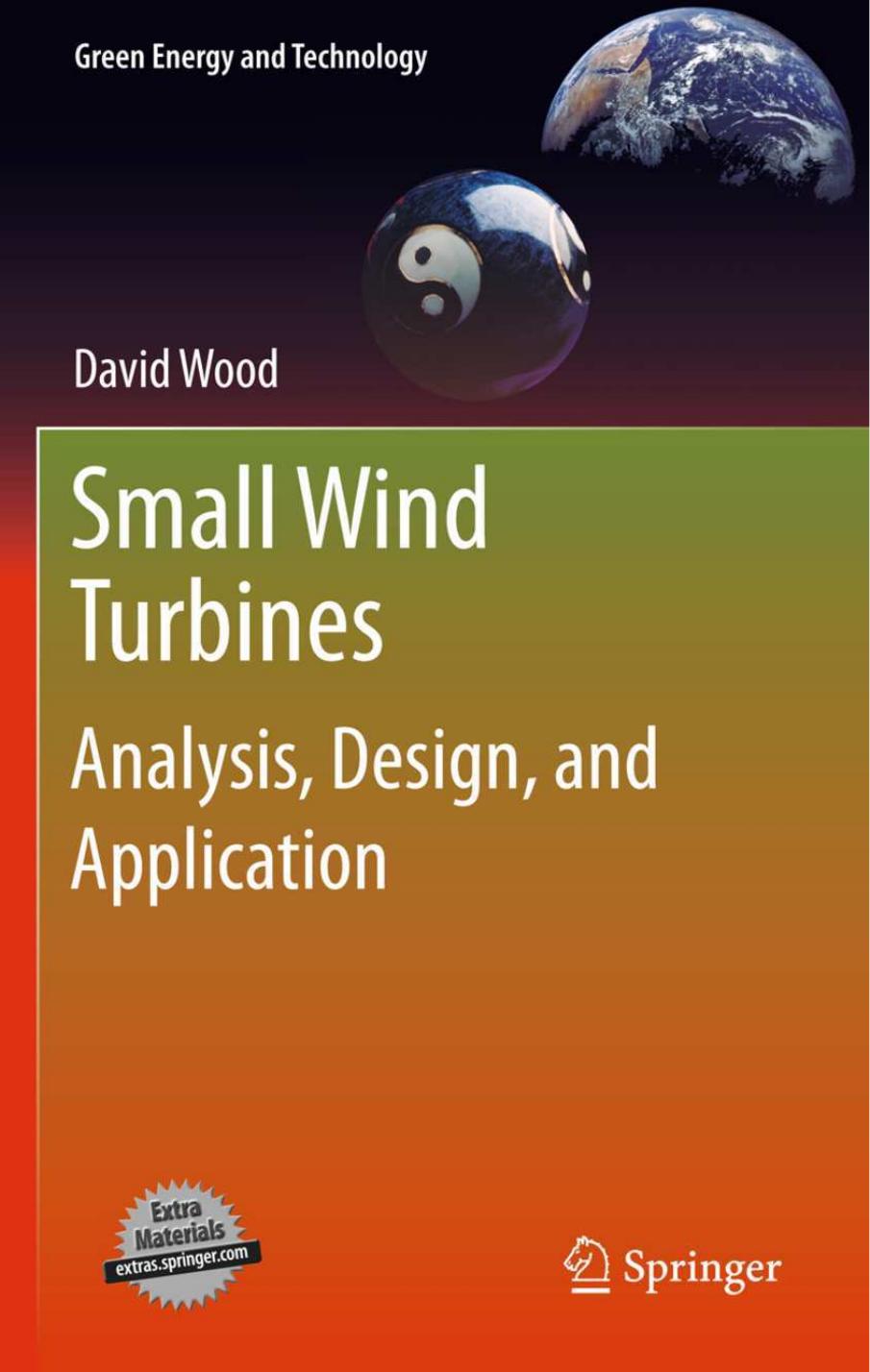Small Wind Turbines by David Wood

Author:David Wood
Language: eng
Format: epub, pdf
Publisher: Springer London, London
Fig. 7.8Finite element model of the Aerogenesis 2.5 m long blade for Load Case H of the IEC simple load model. The strain is colour-coded with the maximum occurring in the constant chord region at the hub. Image from Phil Clausen
7.5 Blade Manufacture
There is a wide range of possible materials for, and methods of making small blades. The suitability of each may vary with blade length. For example, timber is an excellent material for small blades. Peterson and Clausen [4] documented the material properties and fatigue behaviour of Radiata Pine and Australian Hoop Pine which is extensively used for ultralight aircraft propellers. Both these timbers grow well in plantation. Hoop Pine is the assumed blade material for the example blade design in the previous section and the application of the IEC SLM in Chap. 9. Sinha et al. [5] provide similar data for Nepali timbers as well as information on weathering of a number of surface finishes. Other timbers, including Sitka Spruce, also widely used for propellers, and Douglas Fir, are suitable for wind turbine blades, provided they are grown sustainably. However, the cost of laminating it is high, and so the only practical way of using timber is to carve or machine blades from solid blanks. As length increases, it becomes more difficult to obtain blanks that are knot- and defect-free. Computer numerically controlled (CNC) milling of timber, which was used for the 0.87 m long blades in Fig. 7.7, is straightforward but is probably too expensive for volume production. The most promising technique would appear to be the use of a copying router using a master blade possibly cut from metal on a regular CNC machine. Development of this method is underway at the University of Calgary and progress will be reported in the online materials http://extras.springer.com. Whatever method is used, considerable care is required to reproduce the design aerofoil profile. Figure 7.9 shows measurements of the surface of one of the blades in Fig. 7.7 near its tip, in the region where significant differences in blade shape could have large impact on the power output. Unpublished calculations by Barbara van Bossuyt using aerofoil computational programs XFOIL and RFOIL did not indicate a significant power loss due to the change in shape (Fig. 7.9).
Fig. 7.9Measured blade surface at r/R = 0.995 on one blade from Fig. 7.7. The crosses show the measured surface. The design aerofoil profile (SD7062) is the solid line
Download
This site does not store any files on its server. We only index and link to content provided by other sites. Please contact the content providers to delete copyright contents if any and email us, we'll remove relevant links or contents immediately.
| Circuits | Digital Design |
| Electric Machinery & Motors | Electronics |
| Fiber Optics | Networks |
| Superconductivity |
Whiskies Galore by Ian Buxton(40332)
Introduction to Aircraft Design (Cambridge Aerospace Series) by John P. Fielding(32338)
Small Unmanned Fixed-wing Aircraft Design by Andrew J. Keane Andras Sobester James P. Scanlan & András Sóbester & James P. Scanlan(32141)
Craft Beer for the Homebrewer by Michael Agnew(17446)
Turbulence by E. J. Noyes(7039)
The Complete Stick Figure Physics Tutorials by Allen Sarah(6638)
Kaplan MCAT General Chemistry Review by Kaplan(6054)
The Thirst by Nesbo Jo(5785)
Bad Blood by John Carreyrou(5769)
Learning SQL by Alan Beaulieu(5412)
Weapons of Math Destruction by Cathy O'Neil(5037)
Man-made Catastrophes and Risk Information Concealment by Dmitry Chernov & Didier Sornette(4736)
iGen by Jean M. Twenge(4702)
Digital Minimalism by Cal Newport;(4541)
Life 3.0: Being Human in the Age of Artificial Intelligence by Tegmark Max(4507)
Audition by Ryu Murakami(4099)
1,001 ASVAB Practice Questions For Dummies by Powers Rod(4038)
Electronic Devices & Circuits by Jacob Millman & Christos C. Halkias(4027)
Pale Blue Dot by Carl Sagan(4001)
